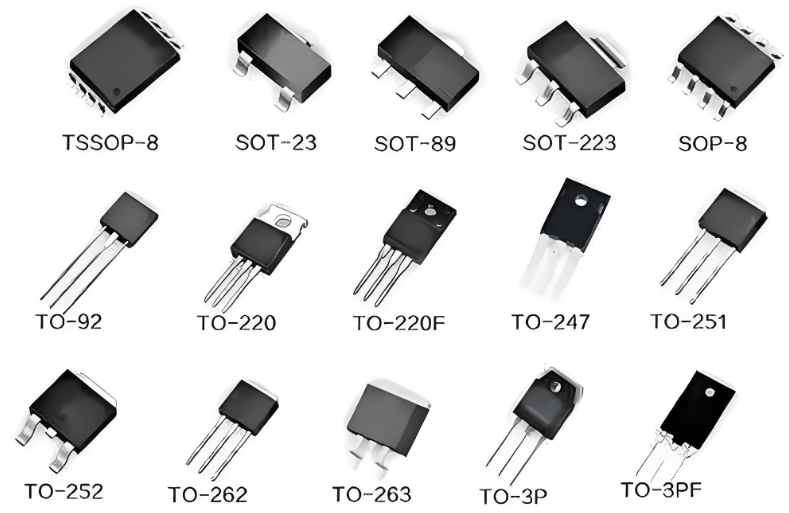The Metal-Oxide-Semiconductor Field-Effect Transistor (MOSFET) is a fundamental semiconductor device widely used in electronics for switching, amplification, and voltage regulation. As a type of field-effect transistor (FET), it operates by controlling the flow of current through a channel using an electric field, making it essential in modern electronic systems, from microchips to power grids.
MOSFETs consist of four key components: a source, drain, gate, and a semiconductor channel (typically made of silicon) between the source and drain. The gate is separated from the channel by a thin layer of insulating material (usually silicon dioxide, SiO₂), which gives the device its "metal-oxide-semiconductor" name.
-
Operation Principle: When a voltage is applied to the gate, it creates an electric field that modulates the conductivity of the channel. This allows current to flow from the source to the drain (or vice versa) when the gate voltage exceeds a threshold, enabling the MOSFET to act as a switch or amplifier.
-
Types: MOSFETs are classified into two main categories based on their channel type:
-
N-channel MOSFETs: Conduct current using electrons; they require a positive gate voltage relative to the source to turn on.
-
P-channel MOSFETs: Conduct current using holes; they require a negative gate voltage relative to the source to turn on.
MOSFETs offer several benefits that make them preferred in electronic design:
-
High Input Impedance: The insulating oxide layer between the gate and channel results in minimal current flow into the gate, reducing power loss and simplifying circuit design.
-
Fast Switching Speed: They can turn on/off rapidly (nanoseconds), making them ideal for high-frequency applications like power supplies and RF circuits.
-
Low Power Consumption: Efficient operation minimizes energy loss, critical for battery-powered devices and energy-efficient systems.
-
Compact Size: MOSFETs can be miniaturized easily, enabling integration into dense integrated circuits (ICs) such as microprocessors and memory chips.
-
Versatility: Available in various configurations (enhancement-mode, depletion-mode) to suit switching, amplification, or voltage regulation needs.
MOSFETs are ubiquitous in electronics, with applications spanning multiple sectors:
-
Consumer Electronics: Used in smartphones, laptops, and TVs for power management, audio amplification, and display control.
-
Power Electronics: Critical in DC-DC converters, inverters, and motor drives for electric vehicles (EVs), renewable energy systems (solar inverters), and industrial machinery.
-
Computing: Integral to microprocessors and memory chips (e.g., MOSFETs form the basis of CMOS technology in CPUs and RAM).
-
Telecommunications: Enable high-frequency signal processing in 5G base stations, routers, and satellite communication systems.
-
Automotive: Power management in EV batteries, engine control units (ECUs), and advanced driver-assistance systems (ADAS).
-
Aerospace and Defense: Used in radar systems, avionics, and satellite equipment for reliable, high-performance operation in extreme environments.
-
Small-Signal MOSFETs: Designed for low-power applications like amplifiers and signal switching in audio circuits.
-
Power MOSFETs: Ruggedized for high-current, high-voltage scenarios (e.g., EV powertrains, industrial motors) with features like low on-resistance (RDS(on)) to minimize heat generation.
-
RF MOSFETs: Optimized for radio frequency (RF) applications, such as wireless communication and radar, with low noise and high-frequency performance.
-
Logic-Level MOSFETs: Operate at lower gate voltages (e.g., 3.3V), compatible with microcontrollers and digital circuits.
When choosing a MOSFET, engineers consider key specifications:
-
Drain-Source Voltage (VDS): Maximum voltage the device can withstand between drain and source.
-
Continuous Drain Current (ID): Maximum current the MOSFET can carry under steady conditions.
-
On-Resistance (RDS(on)): Resistance of the channel when fully on; lower values reduce conduction losses.
-
Gate Threshold Voltage (VGS(th)): Minimum gate voltage required to turn the MOSFET on.
-
Power Dissipation (PD): Maximum power the device can dissipate without overheating, influenced by thermal management.
MOSFET, Metal-Oxide-Semiconductor Field-Effect Transistor, N-channel MOSFET, P-channel MOSFET, power MOSFET, RF MOSFET, MOSFET applications, MOSFET working principle, semiconductor transistor, high-frequency MOSFET.
